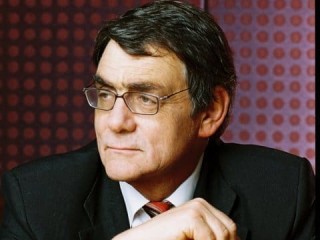 The Australian dollar is likely to ease nearer to parity with the US$ by year’s end and fall further in 2012, a leading financial sector economist told a Sydney briefing on Friday.
The Australian dollar is likely to ease nearer to parity with the US$ by year’s end and fall further in 2012, a leading financial sector economist told a Sydney briefing on Friday.
Bill Evans, chief economist with Westpac, was presenting his company’s quarterly Trends market outlook.
“We retain our call that the A$ will be near parity by the end of 2012,” he said.
During the past three months the A$ has traded in a fairly narrow range from US104c to US107c. As Beef Central was updated this morning, it was around the middle of that range.
“Last month we stuck with the view that the A$ would finish June around US105c despite going above US110c in late April/early May,” Mr Evans said.
“We noted in early May that we were genuinely suspicious of the scale of the US$ sell-off. On our calculations most of the rise in the A$ to US109c+ was due to US$ weakness.”
Sentiment had turned in favour of the US currency recently and the A$ has steadily lost ground, Mr Evans said.
Sentiment towards the US$ was likely to improve further through July and August, he said.
“The Federal Reserve will curtail its QE2 policy on June 30. That program of purchasing US Treasury securities has seen the Fed acquiring, on average, 80 percent of all new issuance since November.”
“Because the majority of the proceeds of these purchases have been lodged back with the Federal Reserve by commercial banks in the form of excess reserves, the process has not seen a major increase in the broad money supply. But it has increased the potential availability of credit, increased the supply of narrow money and lowered US yields – all of which point to a weaker currency than would otherwise have been the case,” Mr Evans said.
Accordingly in previous periods when QE has been initiated or curtailed it had had a significant impact on the US$.
“We do not expect the markets’ directional response this time to be any different following the end of QE2, particularly if yields rise as we expect them to,” Mr Evans said.
Westpac has been forecasting QE3 since it was announced that QE2 would cease in June, 2011. The market expectation at the time was that the momentum in the US economy would remain in an upswing, thus allowing the Federal Reserve to withdraw its stimulus with a minimum of fuss.
“By contrast we argued that, just as we saw in 2010, once the effects of stimulus faded, momentum would ease again. This is now happening,” Mr Evans said.
“So we face the prospect of the Fed tightening policy by withdrawing stimulus just when momentum is fading.”
Another round of stimulus was required, he argued, but political inertia and an expectation that ‘something would turn up’ was likely to delay that until next year.
Mr Evans said a delay would also give core inflation a chance to respond, with the usual lags, to the weakening in activity currently evident in the marketplace, and likely to continue.
A renewed concern about the potential for deflation would be the “final pillar in the QE3 edifice,” he said.
“In the meantime we expect the A$ to lose further altitude through the remainder of 2011 and into 2012, although speculation regarding QE3 will certainly provide periodic support for the A$ around the general downtrend.”
Additional drivers of the A$ in the remainder of 2011 would be a continuation of the fall in commodity prices that is currently underway and ongoing concerns about global risks.
Supply shocks from the January floods and to a lesser extent cyclones in WA temporarily lifted bulk prices, but slowing global demand, particularly in China, would remain a weight on commodity prices.
The A$ was also likely to be dogged by ongoing uncertainty in the global financial markets, Mr Evans said.
“We think that European financial uncertainties will only really be settled by loan restructuring (to ease the pressure from the debt overhang) and real devaluation (to allow the economies of the countries in crisis to restore economic prosperity). There is likely to be a very long, painful and circuitous route to this steady state, and financial instability will be a certain side effect,” he said.
The quarterly Agribusiness Trend report suggested domestic economic conditions would remain solid, with the unemployment rate holding in the 4.8pc to 5.2pc range.
“The Reserve Bank is still likely to use an inflation report as sufficient reason to raise rates once more in 2011 but no further action will be required until well into 2012. The period where rising interest rates provided the A$ with unique support has well and truly passed,” Mr Evans said.
Copies of the June quarter Trends Report are available here.
